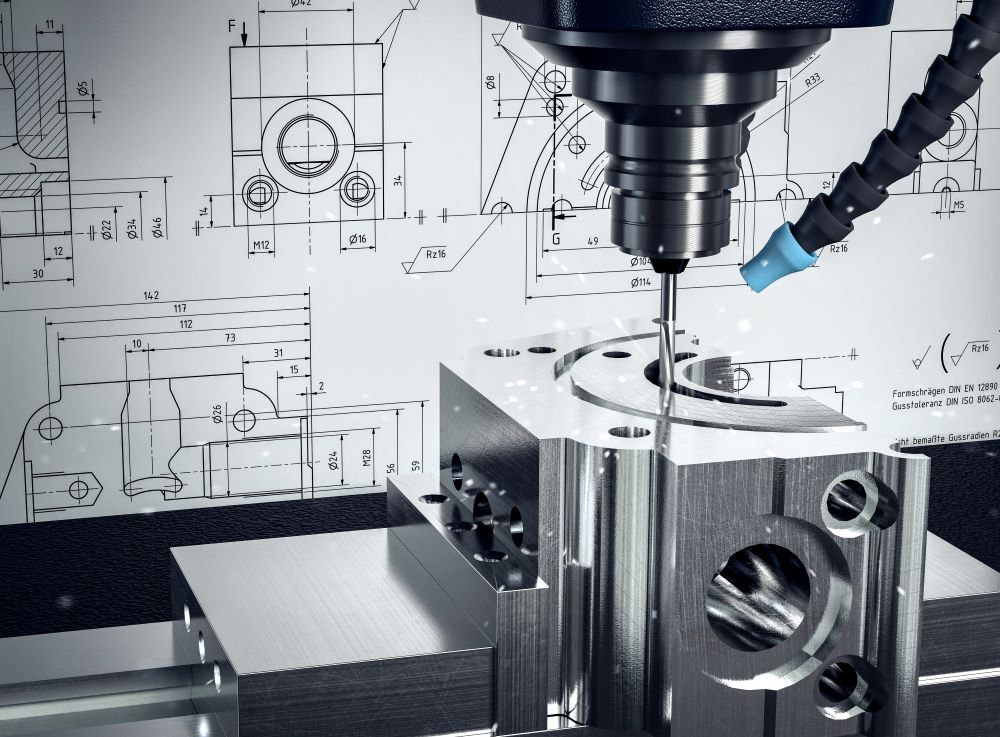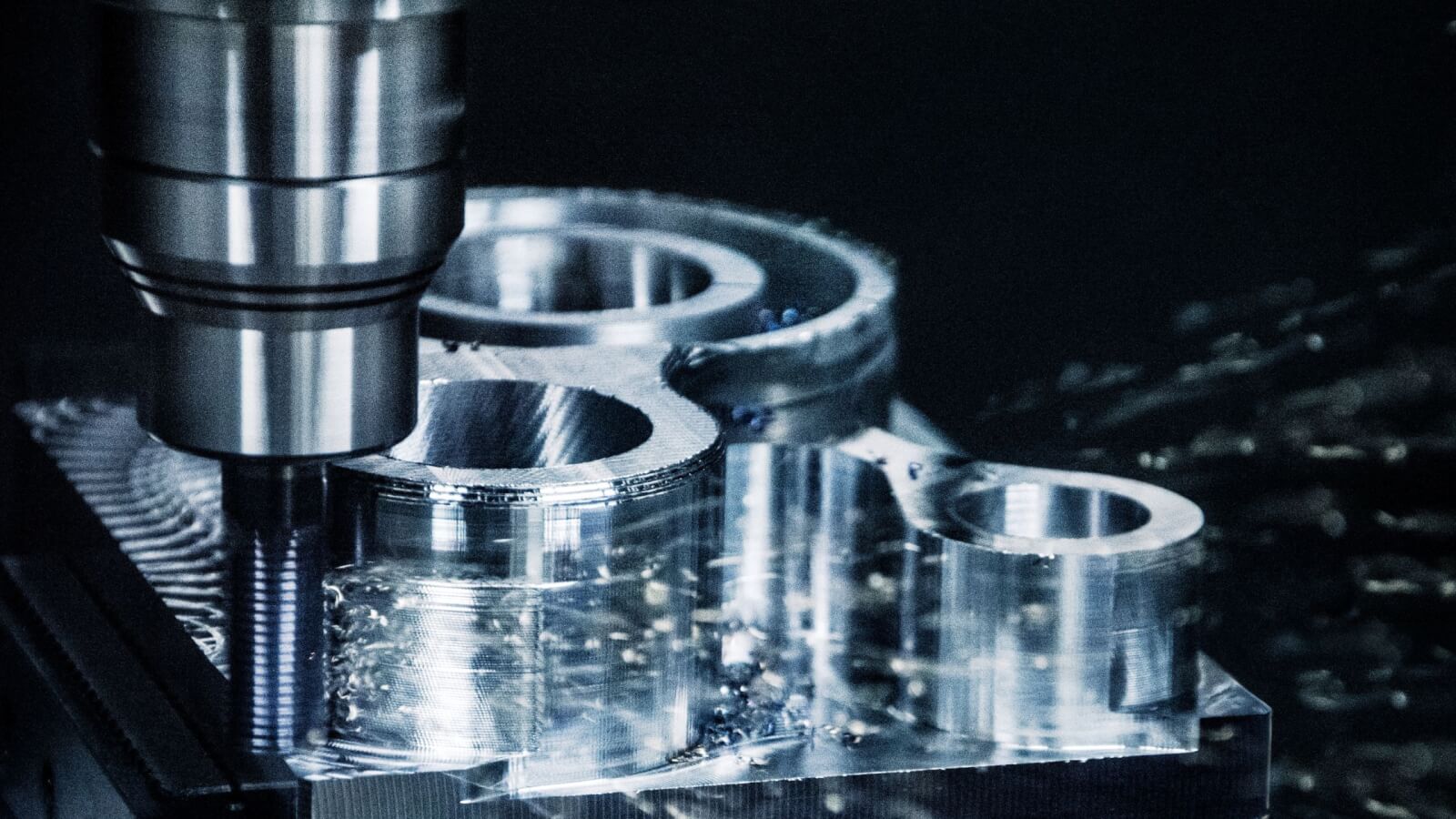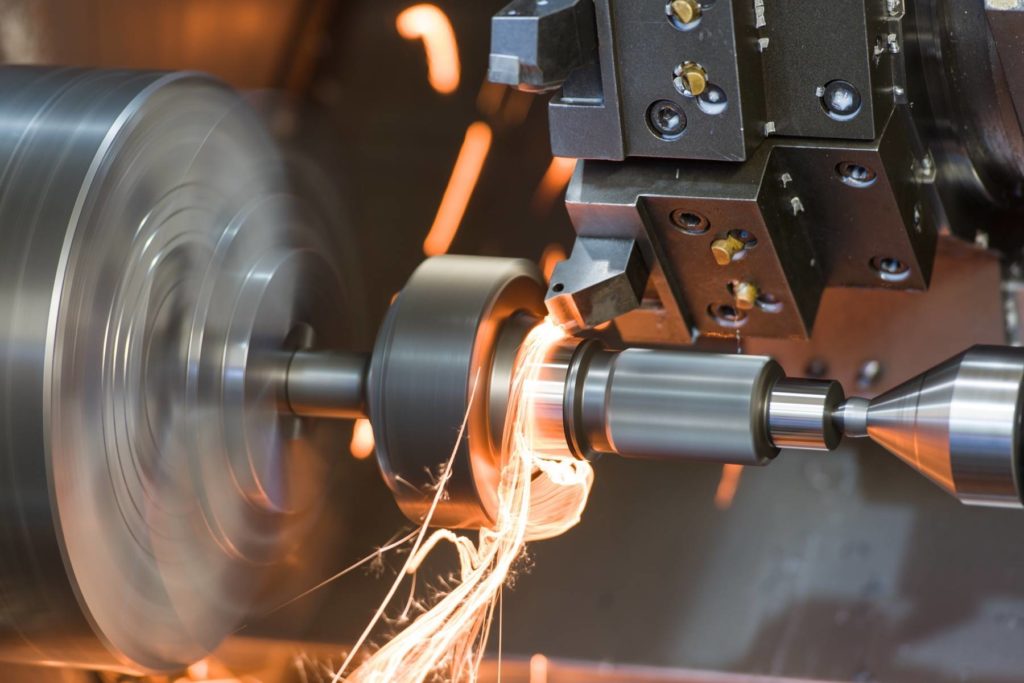Fasteners and Machining: Essential Elements for Precision Manufacturing
Fasteners and Machining: Essential Elements for Precision Manufacturing
Blog Article
Revealing the Details of Bolts and Machining Processes for Ideal Performance
In the realm of design and manufacturing, the choice of bolts and the complexities of machining procedures play an essential role in figuring out the ultimate efficiency and durability of an item. From the relatively uncomplicated job of choosing the right kind of fastener to the complex precision machining techniques utilized, every action in this process demands meticulous attention to detail. As we embark on this expedition into the world of bolts and machining, we will uncover the subtle yet critical aspects that can dramatically influence the performance and quality of the end product, clarifying the often overlooked facets that can make all the difference in attaining ideal efficiency.

Value of Correct Bolt Option
Selecting the proper fasteners is critical in making sure the structural integrity and longevity of any kind of mechanical assembly. Fasteners play a basic role in holding elements with each other safely, with the best selection adding substantially to the general efficiency and reliability of the assembly. When selecting bolts, variables such as material compatibility, environmental problems, load-bearing ability, and ease of setup need to be carefully thought about to guarantee optimum efficiency.
Inappropriate bolt option can cause a variety of concerns, including loosening, rust, and also architectural failing. Utilizing bolts that are not suited to the particular needs of the setting up can endanger its functionality and posture security risks. Designers and designers should diligently assess the application requires and select bolts that satisfy or surpass the needed requirements and specs.
Additionally, the correct bolt option process includes examining the joint layout, anticipated loads, resonance degrees, and possible thermal expansion or contraction to make sure that the selected fasteners can stand up to the operating problems properly. By prioritizing proper fastener option, manufacturers can enhance the top quality, toughness, and efficiency of their mechanical assemblies.
Types and Qualities of Bolts
A necessary aspect of mechanical assemblies exists in comprehending the diverse kinds and one-of-a-kind attributes of fasteners used in various industrial applications. Fasteners are important parts that hold frameworks together, making certain security and functionality.
Screws are threaded bolts that are typically used to join two or more elements together. Bolts are comparable to screws but are normally used with a nut to create a protected joint. Nuts are internally threaded fasteners that mate with bolts to hold elements with each other. Washers are slim plates that distribute the load of a fastener, protecting against damages to the product being fastened. Rivets are permanent bolts that are hammered or pushed into place. Pins are made use of for placement or to safeguard components momentarily.
Comprehending the characteristics of each kind of bolt is essential for picking the best one for a certain application, making certain ideal performance and dependability of the mechanical assembly. Fasteners and Machining.
Precision Machining Methods for Efficiency
The detailed style requirements of numerous bolts necessitate employing precision machining strategies for optimal performance in producing procedures. One of the primary strategies utilized in precision machining is Computer system Numerical Control (CNC) machining, which allows high degrees of precision and repeatability in the production of bolts.
By utilizing precision machining techniques, manufacturers can enhance the top quality of fasteners, minimize material waste, and boost general production effectiveness. The use of sophisticated machining processes helps make certain that bolts fulfill market requirements and customer expectations for performance and dependability.

Factors Affecting Machining Process Performance
Different variables play a considerable duty in identifying the performance of machining procedures in the manufacturing of bolts. The first vital aspect is the selection of cutting devices. Choosing the proper devices based on the check it out product being machined, preferred coating, and reducing speeds can considerably affect the effectiveness and high quality of the machining procedure. In addition, the reducing parameters such as reducing rate, feed price, and deepness of cut are necessary variables that influence performance. Fasteners and Machining. Maximizing these parameters based upon the details demands of the bolt being created is vital to achieving cost-efficient and her latest blog exact machining.
Device strength and stability also play an essential role in determining machining process efficiency. A secure equipment with very little resonances can improve precision and protect against device wear, resulting in much better overall efficiency. The ability and experience of the equipment driver can not be ignored. A knowledgeable driver can make real-time modifications, troubleshoot concerns effectively, and make certain that the machining process runs efficiently, ultimately affecting the final high quality of the bolt.

Quality Assurance Measures in Manufacturing
Factors influencing machining process efficiency, such as reducing device selection and device security, straight influence the implementation of high quality control procedures in production. Quality assurance actions are important in guaranteeing that items meet the needed specifications and criteria. In the manufacturing process, numerous methods are employed to preserve top quality requirements. Evaluation and screening play a vital role in determining any inconsistencies from the wanted end result. Normal maintenance of machining devices is also crucial to maintain quality assurance. Calibration of devices and devices is required to make certain exact and precise manufacturing procedures. Additionally, implementing standardized operating treatments and protocols can help in preserving uniformity and top quality throughout the assembly line. Quality assurance gauges not only focus on the end item yet likewise on every phase of the manufacturing process to stop flaws and mistakes. By adhering to strict quality assurance actions, manufacturers can boost client satisfaction, build a reputation for integrity, and eventually accomplish optimal performance in their machining processes.
Verdict
To conclude, choosing the ideal fasteners and utilizing accuracy machining strategies are important for optimal performance in making procedures. Recognizing the kinds and features of fasteners, together with aspects influencing machining process performance, can lead to boosted efficiency and high quality control actions. By focusing on these complexities, manufacturers can accomplish higher levels of performance and reliability in their products.
In the realm of engineering and manufacturing, the choice of fasteners and the ins and outs of machining procedures play a crucial duty in establishing the best performance and sturdiness of an item (Fasteners and Machining). One of the primary methods utilized in precision machining is Computer system Numerical Control (CNC) machining, which makes it possible for high degrees visit their website of precision and repeatability in the manufacturing of fasteners. The use of advanced machining processes helps ensure that fasteners meet industry criteria and customer assumptions for efficiency and reliability
In conclusion, selecting the best bolts and using precision machining strategies are necessary for optimal efficiency in producing procedures. Comprehending the kinds and attributes of bolts, along with aspects influencing machining procedure efficiency, can lead to enhanced performance and high quality control measures.
Report this page